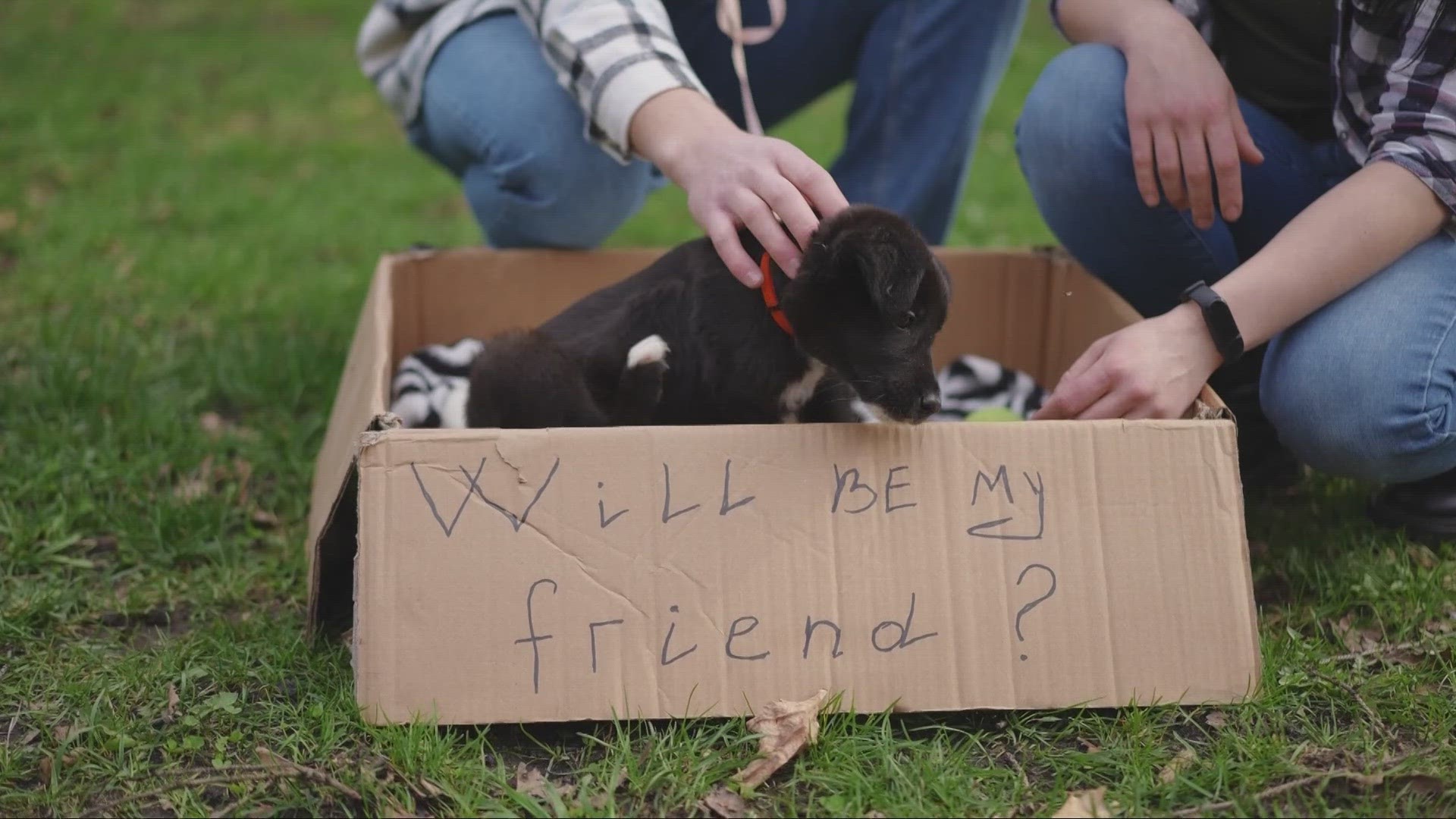BEDFORD HEIGHTS, Ohio — We are one week in to our month-long Clear The Shelters campaign. And bringing that new pet home is only the beginning of the journey, with the goal being years of love, bonding and companionship.
When it comes to adopting dogs, it does take some work to make the very best of your life together. To ensure a "paws-itive" start, we hit up our friendly Ready Pet GO! trainer for some advice.
Valarie Ross-Smith is the owner of Sits 'n Wiggles dog training. She is also a certified dog behavior consultant, using positive reinforcement methods in her practice.
So, what should you do after you bring that newly adopted dog home? Smith says keep things lowkey! "You want to give them what we call a decompression period. For me, that's about 2 to 3 weeks."
Even though your home is likely much cozier and quieter than a shelter, your dog still needs time to work through the stress of what they've been through. They need calm, quiet and to settle into a routine. They don't need more stress. During this decompression time - no outside visitors. It may be tempting to show off your new family member, but for now the only human contact they should have are the people they will live with.
Resist trips to places like pet stores, or dog-friendly shops. No trips to the Metroparks for long hikes, skip the exciting outings. Use this time to familiarize your pet with the walk routes they'll do with you each day.


Taking extra care during outdoor time is critical for new pets. It's not uncommon for some to go missing -- their flight instincts kick in if they get loose, or slip through their collar.
"So even if you have a fenced backyard and you think it's secure, we're going to take them out on a leash, or have that additional tether, if we are taking them out for a walk. I like having 2 points of contact, usually a waist leash to a collar and then a regular six foot leash down to their harness," Smith explained.
Another great "de-stressor" for your new dog: enrichment toys. Licking, sniffing and foraging bring down a dog's heart rate and respiration. Their muscles start to relax.
And as you get to know your new furbaby, consider some education for both of you.
"It's going to help with that bonding. It's going to help teach you how to teach your dog the
manners that you're looking for," said Smith.
At the Sits N' Wiggles training facility - they focus not just on basic manners classes, but puppy classes too - to teach positive socialization.
"And socialization isn't just playing with other dogs, but it's also learning about the world around them. Learning what a vacuum sweeper is, what a car is and meeting other people."
Dogs that don't conquer this can become reactive.
Behaviors include lunging at passing cars, or growling in situations they find stressful.
"We lovingly call it having "big feelings." It can be well managed and even to the point where the dogs can do a lot more friendly activities without responding that way," said Smith about classes for reactive dogs.
Providing a pet a home is a wonderful thing. But taking steps to support and nurture it for its lifetime -- is even sweeter.
Check out all the shelters and rescues participating in Clear The Shelters.
Learn more about classes at Sits n' Wiggles in Bedford Heights.

